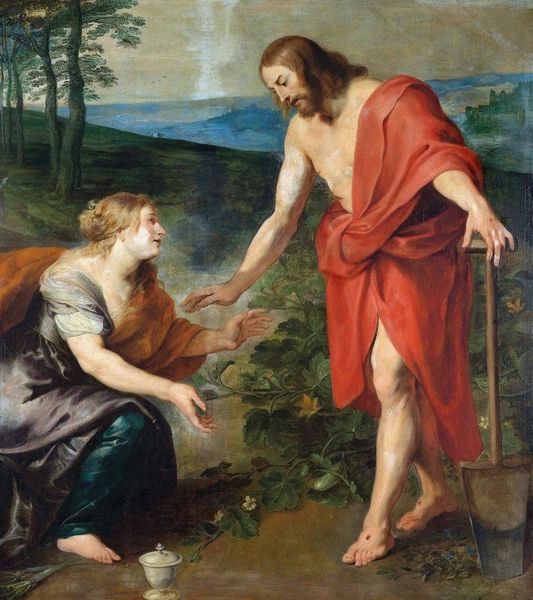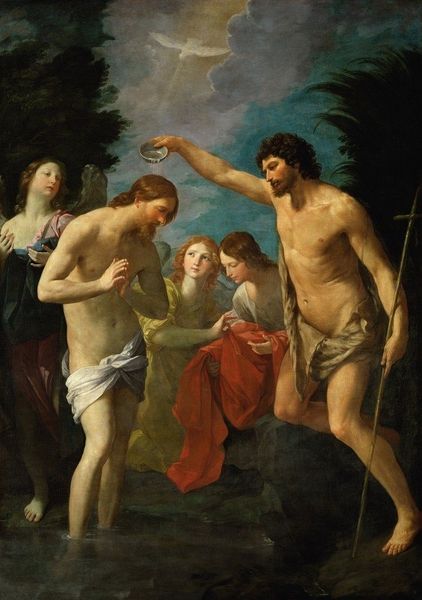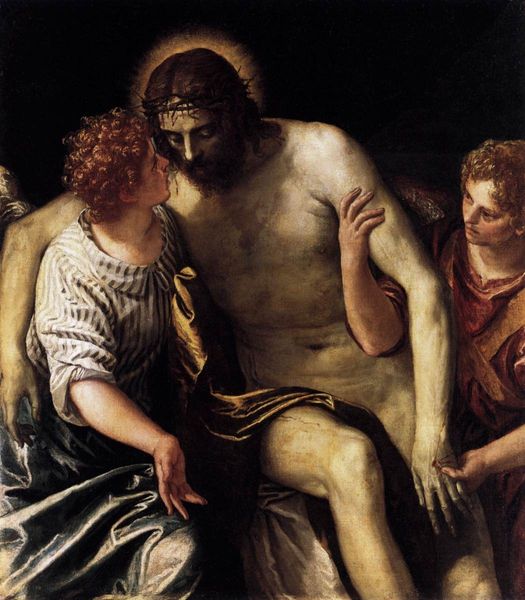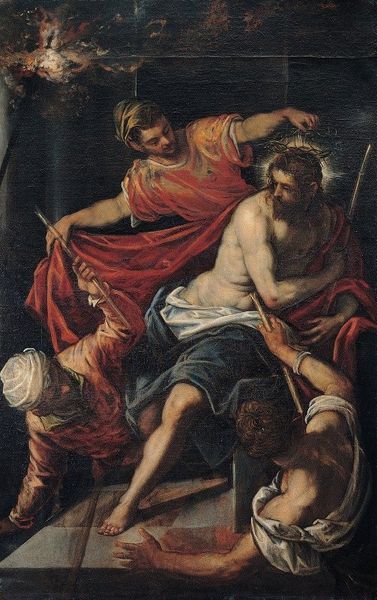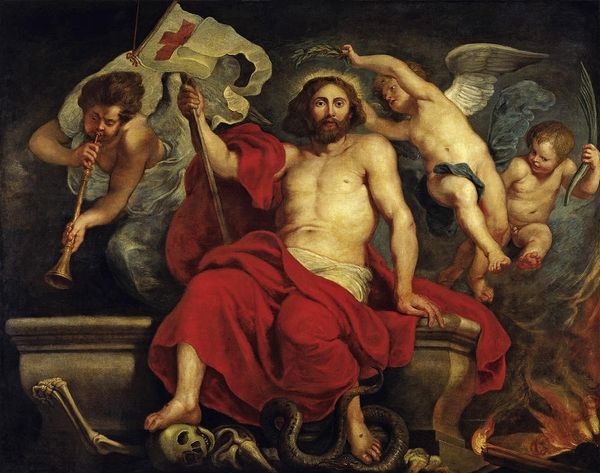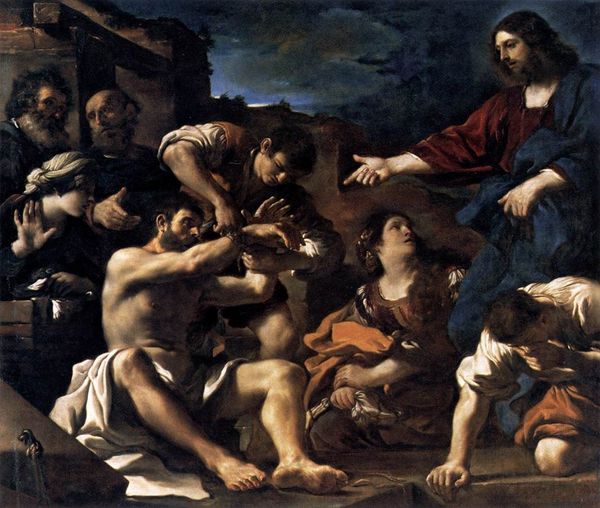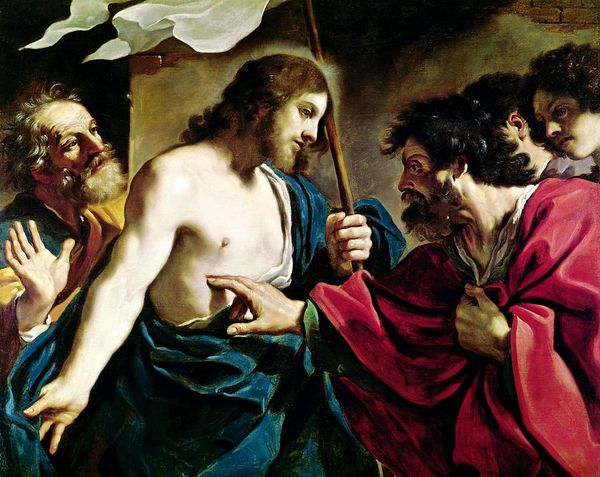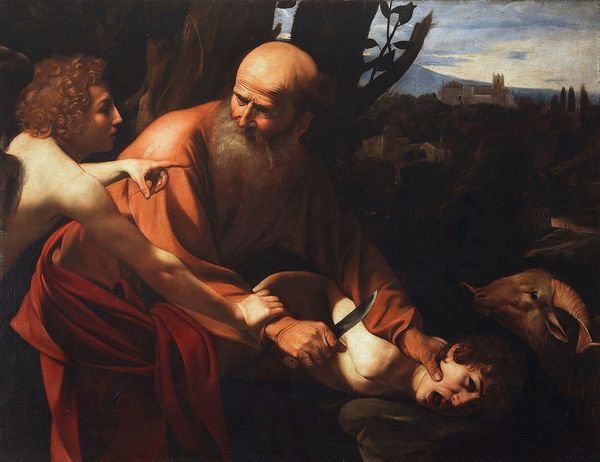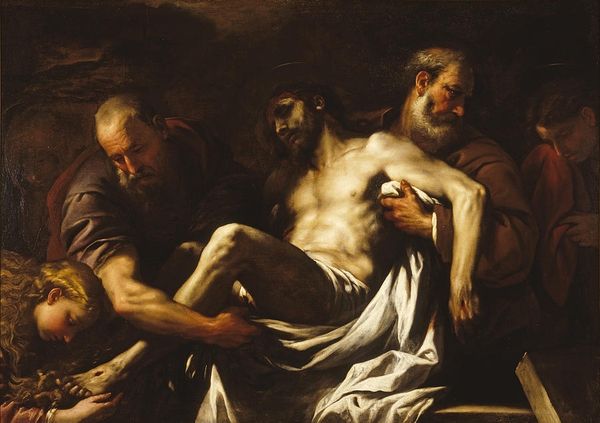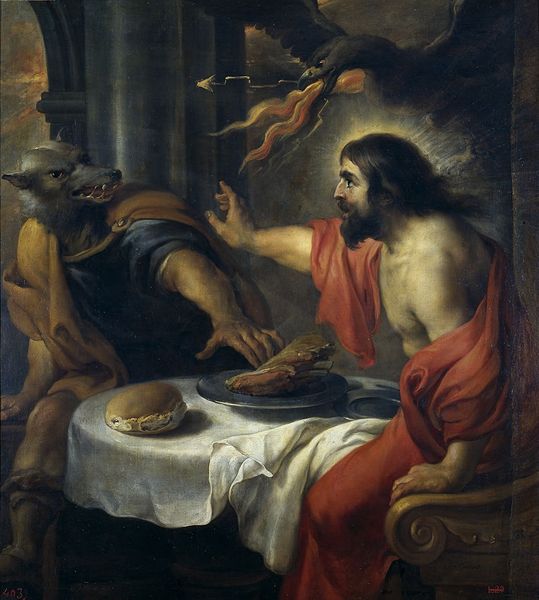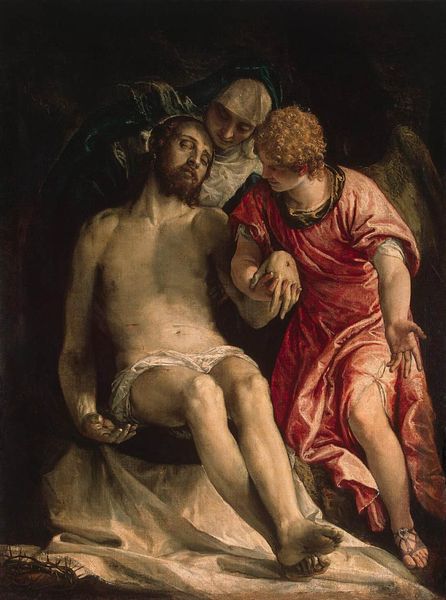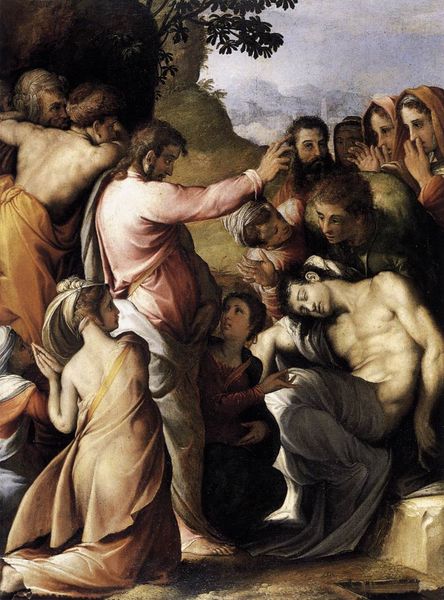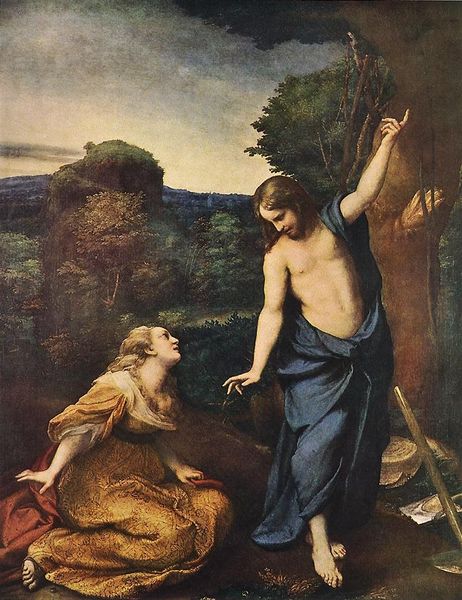
painting, oil-paint
#
portrait
#
venetian-painting
#
narrative-art
#
painting
#
oil-paint
#
mannerism
#
oil painting
#
jesus-christ
#
group-portraits
#
christianity
#
history-painting
#
angel
#
christ
Copyright: Public domain
Curator: Let's consider Paolo Veronese's “Baptism of Christ” from 1561, executed in oil paint. It's a powerful rendering of a key moment in Christian narrative, a grand example of Venetian painting. Editor: It’s quite striking. The figures dominate the composition, and I’m immediately drawn to the intense use of color—particularly the deep reds and vibrant blues that create a palpable sense of drama. The scale is impressive, isn't it? Curator: Indeed. It’s interesting how Veronese incorporates elements of Mannerism into a religious scene. Look at the elongated figures and the theatrical poses. It's all carefully designed to impress the viewer and reinforce the authority of the Church in a period of Counter-Reformation. Editor: Yes, and the dynamism in the upper register, with the angels and the Holy Spirit depicted almost swirling in the heavens, creates this wonderful sense of divine energy pouring down onto the scene. But what I also note is the asymmetry – the positioning of Christ and John the Baptist pulls our eye towards the left, and then our gaze travels around to the group on the bank. Curator: That's a keen observation. Consider that Veronese was active during a time when Venice was a powerful, mercantile state. This artwork reflects not only the era's religious sentiment but also the splendor and theatricality embraced by the Venetian elite, where art was often a display of civic and personal power. The inclusion of onlookers, with their detailed expressions and elaborate attire, underscores the importance of witnessing and celebrating this pivotal religious event. Editor: There's almost a tension, isn’t there, between the gravity of the central scene and the almost operatic staging around it. It certainly engages the eye – and challenges our emotions. What's fascinating to me is the detail of the water pouring, this emphasis makes the painting even more engaging, yet still focused and grounded in faith. Curator: Precisely. Ultimately, “Baptism of Christ” is more than just a depiction of a biblical event; it’s a complex product of its time, reflecting religious, social, and political currents that shaped Veronese's world. Editor: And what makes it endlessly compelling is how Veronese uses colour and space to evoke these tensions that are part of both its cultural context and his singular artistic style.
Comments
No comments
Be the first to comment and join the conversation on the ultimate creative platform.
